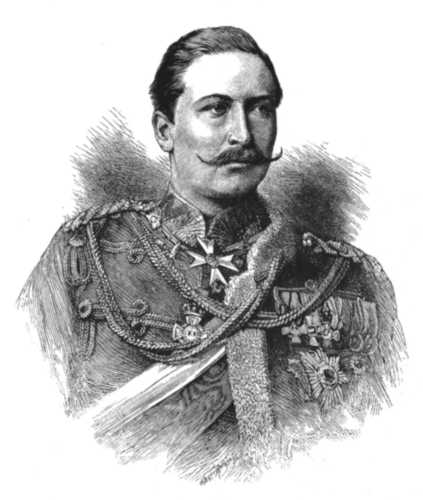
THE EMPEROR OF GERMANY.
(After a Photograph by J. C. Schaarwächter, Photographer to theEmperor.)
A
HISTORY OF GERMANY
FROM THE EARLIEST TIMES TO
THE PRESENT DAY
BY
BAYARD TAYLOR
WITH AN ADDITIONAL CHAPTER BY
MARIE HANSEN-TAYLOR
NEW YORK
D. APPLETON AND COMPANY
1897
Copyright, 1874, 1893,
By D. APPLETON AND COMPANY.
Electrotyped and Printed
at the Appleton Press, U. S. A.
PREFACE.
When I assented to the request of the publishers that I would edit a newedition of the History of Germany, and write an additional chapterfinishing the work down to the present date, I was fully aware of bothmy own shortcomings and the difficulty of the task. That I undertook it,nevertheless, is because I was strongly tempted to perform what Iconsidered, in my case, an act of piety. Being naturally familiar withthe aim and style of this book, I have tried to compile a new chapter inthe simple narrative fashion by which the History has commended itselfto its readers.
In his "Introductory Words" to the original edition the author says:"The History of Germany is not the history of a nation, but of a race.It has little unity, therefore it is complicated, broken, and attachedon all sides to the histories of other countries. In its earlier periodsit covers the greater part of Europe, and does not return exclusively toGermany until after France, Spain, England and the Italian States havebeen founded. Thus, even before the fall of the Roman Empire, it becomesthe main trunk out of which branch the histories of nearly all Europeannations, and must of necessity be studied as the connecting link betweenancient and modern history. The records of no other race throw so muchlight upon the development of all civilized lands during a period offifteen hundred years.
"My aim has been to present a clear, continuous narrative, omitting noepisode of importance, yet preserving a distinct line of connectionfrom century to century. Besides referring to all the best authorities,I have based my labors mainly upon three recent German works—that ofDittmar, as the fullest; of Von Rochau, as the most impartial; and ofDr. David Müller, as the most readable. By constructing an entirely newnarrative from these, compressing the material into less than half thespace which each occupies, and avoiding the interruptions and changes bywhich all are characterized, I hope to have made this History convenientand acceptable to our schools."
The book is, indeed, eminently fitted for use in the higher grades ofschools. But the scope, comprehensiveness, and style of the work make itin no less a degree inviting and attractive to the general reader.
The material for the preparation of the additional chapter was difficultof access, since the history of the last twenty years is on recordchiefly in monographs and in the public press. The best guide I havefound is the "Politische Geschichte der Gegenwart," by Prof. WilhelmMüller. The author of the present book was fortunate in being able toclose it with the glorious events of the years 1870 to 1871, and thebirth of the new Empire. The additional chapter has no such ending. Itdeals with the begin